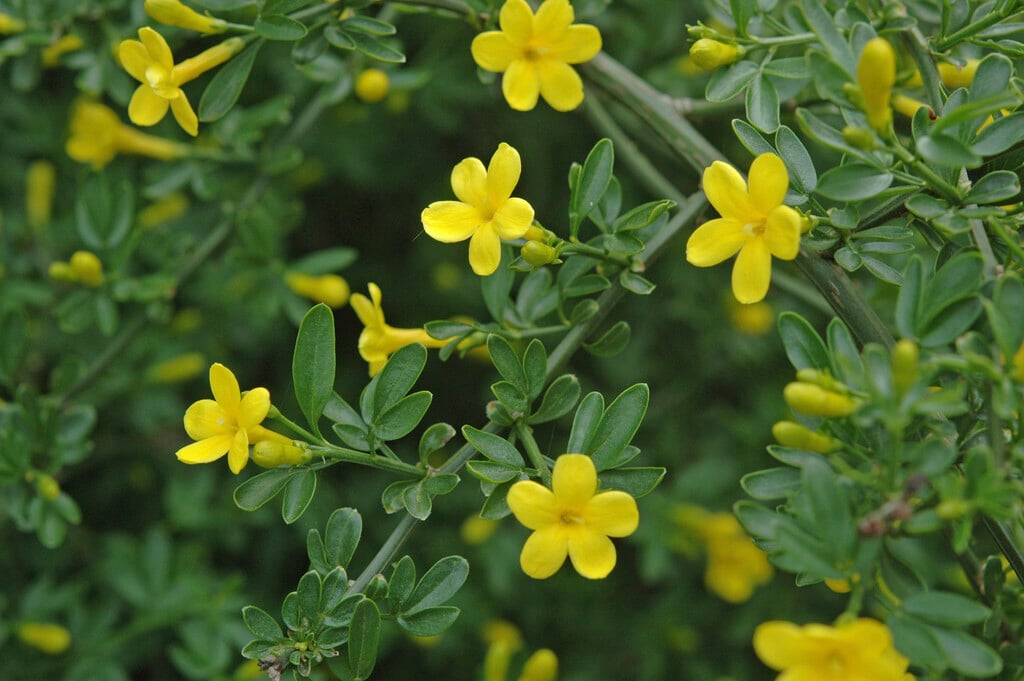Jasminum fruticans
common yellow jasmine
Semi-evergreen shrub about 1.5m tall, with an upright habit, green angled stems and alternate green leaves composed of narrow leaflets 2cm long. Slightly fragrant, yellow flowers 1.5cm across, are produced in clusters at the end of the stems during summer, followed by black fruits

Buy this plant
Size
Ultimate height
1–1.5 metresTime to ultimate height
5–10 yearsUltimate spread
1–1.5 metresGrowing conditions
Moisture
Well–drainedpH
Acid, Alkaline, NeutralColour & scent
| Stem | Flower | Foliage | Fruit | |
| Spring | Green | Green | ||
|---|---|---|---|---|
| Summer | Green | Yellow | Green | |
| Autumn | Green | Green | Black | |
| Winter | Green | Green |
Position
- Full sun
- Partial shade
Aspect
South–facing or West–facing or East–facing
Exposure
Sheltered Hardiness
H5Botanical details
- Family
- Oleaceae
- Native to GB / Ireland
- No
- Foliage
- Semi evergreen
- Habit
- Bushy
- Genus
Jasminum are evergreen or deciduous shrubs, many climbing by twining stems bearing usually pinnate leaves, and star-shaped white, pink or yellow flowers, which are sometimes very fragrant. Fruit a black berry
- Name status
Correct
- Plant range
- Mediterranean, Asia Minor
How to grow
Cultivation
Grow in well-drained soil in full sun or light shade in a sheltered position. See Jasmine cultivation
Propagation
Propagate by semi-ripe cuttings in summer or layering in autumn
Suggested planting locations and garden types
- City and courtyard gardens
- Coastal
- Cottage and informal garden
- Climber and wall shrubs
- Flower borders and beds
- Wall side borders
Pruning
Pruning group 2 or can be trained as a wall shrub
Pests
May be susceptible to aphids, glasshouse red spider mite and mealybugs
Diseases
May be susceptible to honey fungus (rarely)
Get involved
The Royal Horticultural Society is the UK’s leading gardening charity. We aim to enrich everyone’s life through plants, and make the UK a greener and more beautiful place.